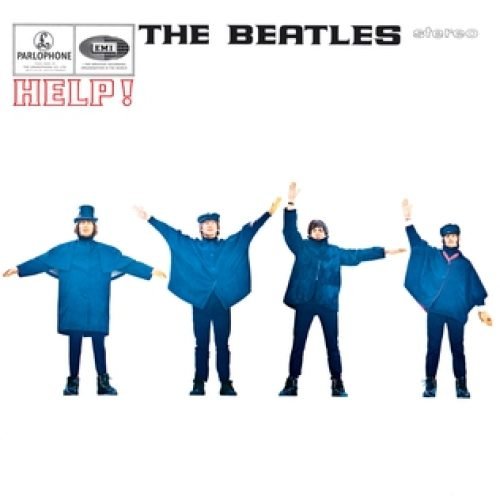In the grand tapestry of The Beatles‘ discography, Help! emerges as a pivotal thread, marking a distinct phase in their ever-evolving artistic journey. Released in August 1965, the album not only deepens the themes and sounds explored in their earlier work but also hints at the experimental urges that would define their later masterpieces. Situated between the nascent innocence of Beatlemania and the psychedelic innovations of Rubber Soul and Revolver, Help! serves as a crucial bridge, embodying both the end of their early period and the beginning of their more complex, introspective era.
Help! is often remembered for its title track, which, through its cry for assistance, reveals a more vulnerable side of the band, especially John Lennon, who would later describe it as one of his most genuine Beatles songs. This vulnerability is a theme subtly woven throughout the album, marking a departure from the more carefree love songs that characterized their initial surge to fame. Yet, it’s not just the emotional depth that sets the album apart; it’s also the band’s willingness to experiment with new instruments and studio techniques, paving the way for the sonic innovations that would become their hallmark.
I Remember Paul playing to me yesterday and he called it scrambled egg. It wasn’t until he got the lyric together that we decided to record it. So he went down and sat on a high stool with his acoustic guitar and sang Yesterday.
George Martin on creating Yesterday
Artistic Intentions
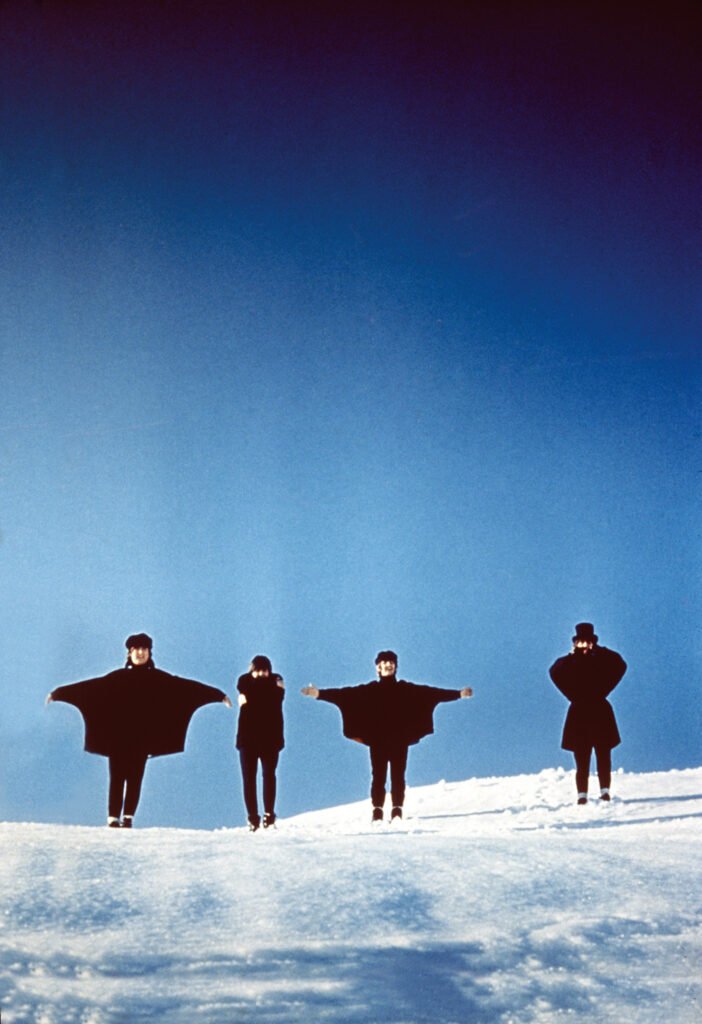
The artistic intentions behind Help! are multifaceted. On one hand, it was conceived within the constraints of producing a soundtrack for their second feature film, also titled “Help!” This commercial obligation, however, didn’t stifle their creativity; instead, it spurred the band to explore themes of helplessness and stress, perhaps mirroring their own feelings under the constant scrutiny of fame. Interviews from that era, including those with Lennon, often hint at a dual purpose: to fulfill their contractual obligations while also pushing their artistic boundaries.
In this album, The Beatles began to tread into uncharted territories, both musically and lyrically, setting the stage for their later, more avant-garde works. From the folk rock influence of “I’ve Just Seen a Face” to the introspective “You’ve Got to Hide Your Love Away,” and the inclusion of exotic instruments like the sitar on “Ticket to Ride,” Help! showcases a band at the cusp of a significant transformation. It’s this blend of artistic ambition, emotional depth, and musical innovation that not only cements Help! as a critical juncture in The Beatles’ career but also as a milestone in the broader landscape of 1960s pop music.
Sonic Exploration
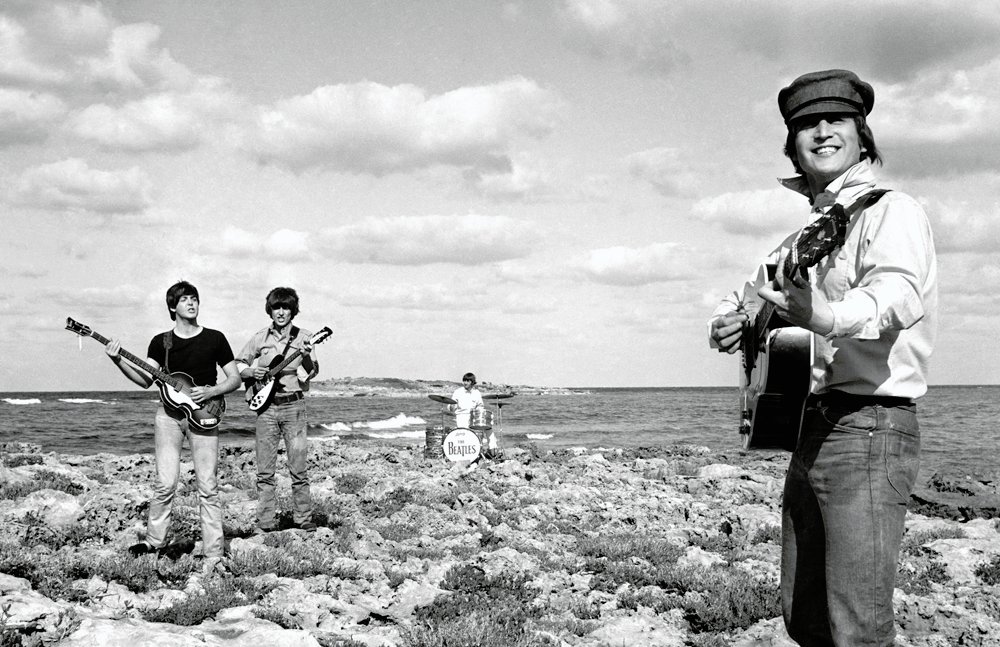
The sonic landscape of The Beatles’ Help! album is a testament to the band’s burgeoning desire to experiment and push the boundaries of popular music. Under the aegis of producer George Martin, the production values of Help! are both crisp and clear, a hallmark of The Beatles’ recordings during this era. This clarity in production does not just serve an aesthetic purpose; it acts as a pristine canvas, allowing the emotional depth and musical innovations within the album to shine through with vivid intensity.
Musical Arrangements
One of the most striking aspects of Help! is its musical arrangements. The album is replete with examples of The Beatles’ willingness to experiment with sound and structure. For instance, the use of a string quartet in “Yesterday” was groundbreaking, bringing a classical sensibility to pop music in a way that was unprecedented at the time. This blending of genres not only highlighted McCartney’s tender vocals and introspective lyrics but also set a new standard for what could be achieved in popular music. Similarly, “Ticket to Ride” is notable for its distinctive drum pattern and the early use of a sitar, hinting at the band’s later explorations into Indian music and more complex rhythmic structures.
The vocal arrangements on Help! also deserve special mention. The harmonies, particularly in tracks like “You’re Going to Lose That Girl,” showcase The Beatles’ innate understanding of vocal layering and texture, adding depth and emotion to the music that goes beyond the lyrics themselves. This attention to vocal detail is a thread that runs through the album, enhancing its thematic concerns and amplifying its emotional impact.
Genre Elements
Genre-wise, Help! is a melting pot of musical styles, touching upon folk rock, pop, and even the nascent sounds of psychedelic rock. Songs like “I’ve Just Seen a Face” with its uptempo acoustic rhythm, and “You’ve Got to Hide Your Love Away,” reflect a folk influence, likely inspired by Bob Dylan and the contemporary folk scene. Meanwhile, “Ticket to Ride” and the experimental use of sound in “Yesterday” hint at the psychedelic explorations to come. This blend of genres, from the folk-infused tracks to the pop-rock staples, demonstrates The Beatles’ ability to traverse musical landscapes with ease, making Help! a rich and varied sonic experience.
Lyrical Analysis

The Beatles’ fifth studio album, Help!, stands as a lyrical watershed in their discography, marking a transition from the predominantly love-centric themes of their early work to a more introspective and vulnerable narrative. The album weaves a complex tapestry of themes, including helplessness, longing, and the introspection of fame, offering a deeper glimpse into the personal psyches of the band members, particularly John Lennon.
Themes and Messages
At the heart of Help! lies the theme of vulnerability, most explicitly voiced in the title track. “Help!” is not just a call for assistance in a general sense; it’s a poignant admission of the personal struggles and emotional depths the band members, especially Lennon, were beginning to publicly acknowledge. This theme of seeking connection and understanding recurs throughout the album, such as in “You’ve Got to Hide Your Love Away,” reflecting a sense of isolation and the need for emotional shelter.
Another prominent theme is the contemplation of love, not just as a blissful state but as a complex and often challenging experience. “Ticket to Ride” and “You’re Going to Lose That Girl” explore the nuances of relationships ending, blending the personal with the universal in a way that resonates with the listener’s own experiences.
Lyrical Depth
The lyrics of Help! showcase a notable shift towards complexity and poetic depth. While still accessible, the lyrics begin to move away from the straightforward narratives of their earlier songs to more abstract and nuanced expressions. “Yesterday,” for instance, uses simple, evocative language to convey a profound sense of loss and nostalgia, becoming one of the most covered songs in music history due to its universal appeal and lyrical depth.
“Ticket to Ride” is another example where the lyrics, though seemingly straightforward, leave room for interpretation, hinting at deeper layers of meaning beneath the surface narrative of a relationship’s end. This blend of directness and ambiguity invites listeners to engage more deeply with the songs, pondering their own interpretations and connections to the lyrics.
Emotional Impact
The emotional resonance of Help! is one of its most enduring qualities. The album’s exploration of vulnerability, coupled with its lyrical depth, creates a profound emotional impact. Songs like “Help!” and “Yesterday” evoke a sense of empathy and solidarity, as listeners find their own feelings of uncertainty and reflection mirrored in the music. Meanwhile, tracks like “I’ve Just Seen a Face” inject a sense of joy and exhilaration, showcasing the band’s ability to capture the full spectrum of human emotion.
Cohesion and Flow
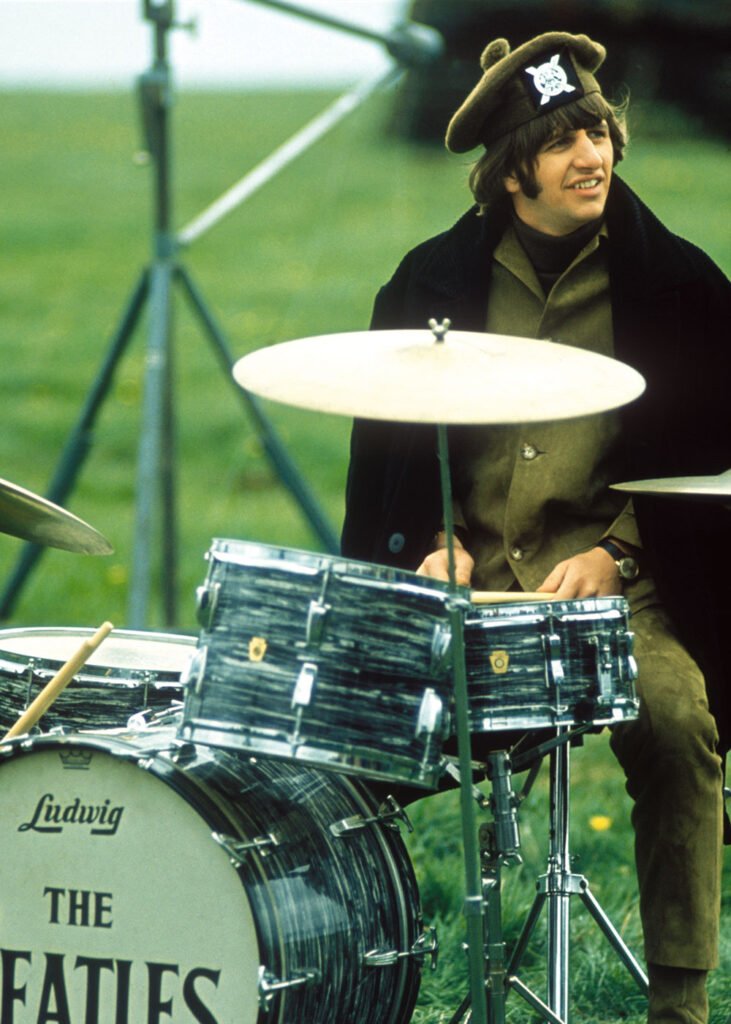
In assessing the cohesion and flow of The Beatles’ Help!, it’s imperative to appreciate how the album navigates its narrative and emotional landscapes. Help! is characterized by a sophisticated sequencing of tracks that guides the listener through a journey of contrasting moods and themes, all while maintaining a clear sense of identity and purpose. This progression is not just a testament to the band’s artistic vision but also to their growing mastery of the album as a comprehensive art form.
Track Progression
From the urgent cry of the opening title track to the reflective serenity of “Yesterday,” the album’s track progression showcases a thoughtful balance between up-tempo numbers and more introspective pieces. This dynamic sequencing creates a natural flow that enhances the listener’s engagement, guiding them through a spectrum of emotions and thoughts. The transition from the vulnerability expressed in “Help!” to the jubilant love in “The Night Before” and then to the introspection of “You’ve Got to Hide Your Love Away” exemplifies the album’s ability to navigate complex emotional territories with grace.
Furthermore, the album’s side two, beginning with the upbeat “Act Naturally” and moving through the narrative depth of “Yesterday,” demonstrates The Beatles’ skill in juxtaposing differing moods that somehow complement rather than conflict with each other. This is a delicate balance that not only speaks to the band’s artistic intuition but also to George Martin’s production prowess, ensuring that each transition feels natural and each track contributes to the album’s overarching narrative and emotional arc.
Thematic Consistency
While Help! traverses a broad emotional and stylistic range, it maintains a remarkable thematic consistency. The themes of vulnerability, longing, and the nuances of love serve as a cohesive thread weaving through the album. Even as the album explores various musical styles—from folk influences to pop-rock anthems—this thematic core remains intact, providing a unifying underpinning to the diverse soundscapes presented.
The emotional authenticity and lyrical introspection of Help! resonate across the tracks, grounding the album’s explorations in a coherent, relatable experience. Despite the potential for the varied musical styles and themes to create a disjointed listening experience, The Beatles manage to avoid abrupt or jarring shifts. Instead, the diversity of content enriches the album, contributing to a sense of depth and complexity that defines Help! as a cohesive work.
Standout Tracks and Moments

The Beatles’ Help! album is rich with moments of artistic brilliance, innovation, and profound emotional impact. Certain tracks stand out not only for their immediate appeal but also for their enduring influence on the landscape of popular music. Here, we delve into these key tracks and highlight specific moments that capture the essence of the album and showcase the unparalleled talent of The Beatles.
Key Tracks
- “Help!” – The title track is a masterpiece of vulnerability set to an upbeat tempo, a juxtaposition that underscores the complexity of seeking assistance in times of emotional turmoil. What sets “Help!” apart is its raw honesty, enveloped in a pop-rock framework, making it a timeless anthem of human fragility.
- “Yesterday” – Often hailed as one of the most covered songs in music history, “Yesterday” is a testament to McCartney’s songwriting prowess. Its melancholic melody, coupled with the simplicity of its lyrics, captures a universal sense of loss and longing. The inclusion of a string quartet, a bold move at the time, adds a layer of sophistication and depth, making “Yesterday” a groundbreaking track in the context of popular music.
- “You’ve Got to Hide Your Love Away” – This track stands out for its folk-inspired sound and introspective lyrics, reflecting Dylan’s influence on Lennon. The emotional rawness and simplicity of the arrangement—featuring acoustic guitars and a flute solo—create a poignant atmosphere that resonates with listeners’ own experiences of concealment and heartache.
Memorable Moments
The opening chord of “Help!” – This powerful chord sets the tone for the entire album, immediately capturing the listener’s attention and signaling the urgency and depth of what’s to come.
The string quartet in “Yesterday” – The moment the strings enter, the song transforms from a simple pop tune into a lush, emotive piece. This innovative use of classical instrumentation in a pop context was not just groundbreaking; it elevated the song to an iconic status.
The flute solo in “You’ve Got to Hide Your Love Away” – This instrumental break is both unexpected and utterly captivating, adding a layer of sophistication to the track and highlighting The Beatles’ willingness to experiment with non-traditional rock instruments.
The vocal harmonies in “Ticket to Ride” – The interplay of Lennon and McCartney’s voices, especially in the chorus, showcases their unparalleled harmonic chemistry, elevating the song’s emotional and sonic landscape.
These standout tracks and moments are emblematic of Help!‘s artistic and emotional depth. Each song serves as a milestone not only in The Beatles’ career but also in the evolution of pop music, blending innovative arrangements with profound lyrical themes. The album, through its memorable melodies, lyrical vulnerabilities, and musical experimentations, captures a pivotal moment in The Beatles’ journey, marking their transition from pop sensations to musical innovators. Help! remains a testament to their enduring legacy, offering listeners a glimpse into the band’s evolving artistic vision and emotional depth.
Artistic Contribution and Innovation

The Beatles’ Help! album occupies a unique and pivotal place within the landscape of 1960s pop and rock music, acting as a harbinger of the innovative directions the band—and indeed, the genre at large—would soon explore. Its release at the midpoint of the decade signified not just another milestone in The Beatles’ burgeoning discography but a bold step into new artistic territories, setting new benchmarks for what popular music could achieve in terms of lyrical depth, musical arrangement, and thematic exploration.
Pushing Boundaries
Help! stands out for its willingness to push beyond the boundaries of what had been established norms in pop music. The Beatles, already at the zenith of their popularity, were not content to rest on their laurels; instead, they used this album as a platform to explore more complex themes of vulnerability, identity, and existential contemplation. This thematic depth, combined with innovative musical techniques, distinguished Help! from much of the contemporary pop music landscape, which was still largely focused on themes of love and romance without the introspective nuance that The Beatles were beginning to exhibit.
Innovative Aspects
Thematic Depth
The exploration of vulnerability and existential angst in tracks like “Help!” and “You’ve Got to Hide Your Love Away” represented a significant departure from the band’s earlier, more light-hearted work. This introspection would become a hallmark of their later albums, influencing countless artists in the years to come.
Musical Arrangements
The album’s innovative use of instrumentation, such as the string quartet in “Yesterday” and the flute in “You’ve Got to Hide Your Love Away,” showcased The Beatles’ growing interest in blending traditional rock instruments with those from other genres and traditions. This experimentation laid the groundwork for the rich tapestry of sounds that would characterize their later albums.
Production Techniques
Under the guidance of producer George Martin, Help! featured advanced production techniques and recording innovations. The clarity and sophistication of the album’s production not only enhanced its emotional impact but also demonstrated the creative possibilities of the recording studio as an instrument in its own right.
Genre Blending
The album’s seamless incorporation of elements from folk, classical, and pop genres into a cohesive whole was groundbreaking. By refusing to be pigeonholed into a single musical style, The Beatles challenged the industry’s genre constraints and opened up new avenues for creative expression.
In the broader context of the music industry, Help! solidified The Beatles’ role as pioneers, willing to risk their commercial success for the sake of artistic exploration and innovation. The album’s impact extended far beyond its immediate commercial success, influencing the direction of popular music and inspiring a generation of musicians to experiment with new sounds, themes, and recording techniques.
Closing Thoughts
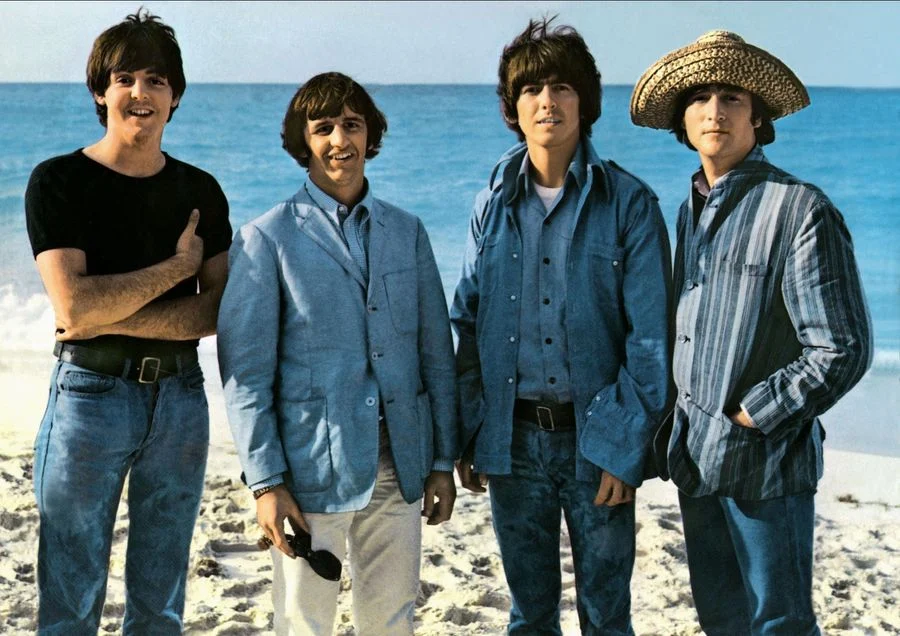
The Beatles’ Help! album is a seminal work that showcases the band’s transition from pop icons to pioneering artists, exploring new lyrical themes, musical arrangements, and production techniques. Its strengths are manifold, from the emotional depth and vulnerability expressed in its lyrics to the innovative use of instrumentation and genre-blending that would come to define much of their later work. The album’s clear production, courtesy of George Martin, allowed The Beatles’ artistic vision to shine, making Help! not just a collection of songs but a cohesive artistic statement.
Strengths
Help! excels in its ability to balance introspective vulnerability with musical innovation. Songs like “Yesterday” and “Help!” reveal a deeper, more reflective side of The Beatles, while the album as a whole marks a significant step forward in their musical journey. The experimentation with different instruments and styles, along with the thematic depth, set Help! apart from its contemporaries and paved the way for the band’s future explorations.
Weaknesses
If Help! has any weaknesses, they may lie in the very transitional nature that makes it so fascinating. As the band was in the midst of evolving their sound and thematic focus, the album occasionally straddles the line between the earlier, more straightforward pop songs and the complex, experimental works that would follow. This can sometimes give Help! a feeling of being caught between two worlds, though this does little to diminish its overall impact and may, in fact, enhance its appeal as a snapshot of a band at a crucial point in their artistic development.
Official Rating
Given its historical significance, artistic innovation, and the sheer quality of its music and production, Help! earns a well-deserved 9 out of 10. This rating reflects the album’s standing as a pivotal work in The Beatles’ discography and its enduring influence on the music industry. While it may not have the cohesive conceptual unity of some of their later albums, Help! represents a moment of profound transition and growth, capturing The Beatles as they began to push the boundaries of popular music.
